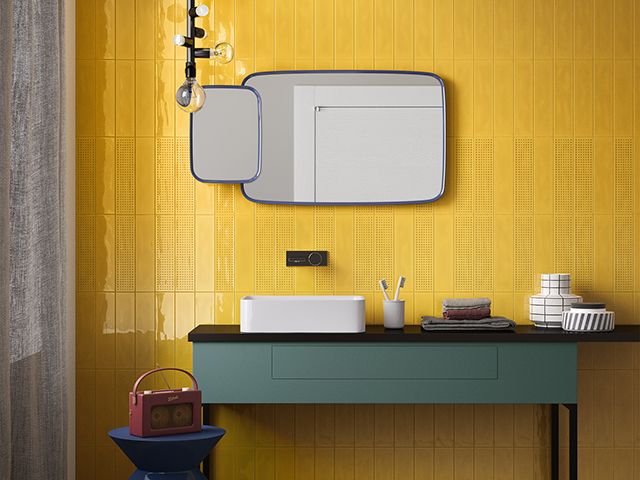
Lemontini interiors: 10 ways to add 70s retro vibes into your home
There’s something pretty comforting about stepping into a room drenched in deep mustard, burnt orange and olive green – warmth that feels both nostalgic and new.
Right now, lemontini yellow and all its retro colours are having quite the moment, as 70s interiors make a welcome return to our homes.
What once seemed loud and garish now feels joyous, cocooning and expressive.
Need proof of the retro resurgence?
Google searches for ‘lemon yellow decor’ have increased 100% over the past few months, while searches for ‘70s home decor’ soared by 277% in recent months, that’s according to research from Dowsing & Reynolds.
The appeal, interior designers say, is easy to understand.
After years of pale neutrals and sleek minimalism, we’re craving character, colour, texture and spaces that feel loved and lived in.
The 70s aesthetic delivers just that: bold hues, sculptural curves, tactile fabrics and natural materials.
It’s a design era born out of optimism, fun, and self‑expression – precisely what many of us are longing for in our homes today.
“These past few years, we’ve been seeing a shift away from cool colours and sharp lines towards more inviting, grounding and joyful design,” explains Adel Rozsa, interior designer and stylist at Studio Noer.
“The warm tones and curved forms of the 70s feel both playful and characterful – exactly what many of us are craving in our décor right now.
“What makes them work so well for modern living is that they add warmth and personality without needing to feel heavy or overly themed.”
With Instagram feeds awash with groovy sofas, graphic prints, and bold accents, this isn’t just a passing fad, it’s a full revival rooted in nostalgia.
We spoke to the design experts to get their advice on how to get the lemontini look in your home, as well as picking their brains about the 70s themes best left in the past.
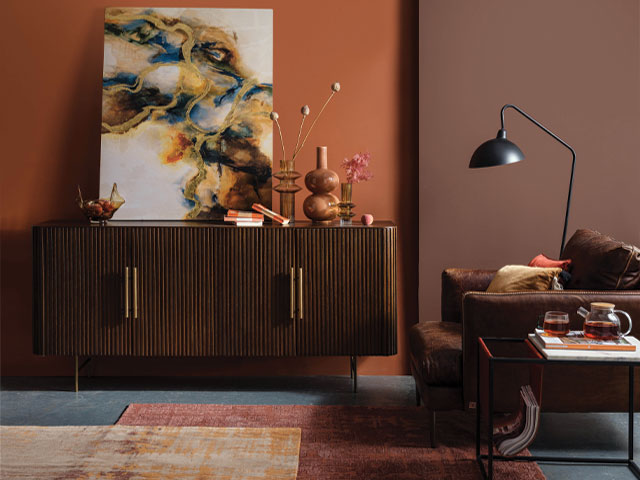
Embrace lemontini yellow
With its zesty vibrancy and unmistakable retro flair, lemontini yellow is the perfect entry point into the 70s revival.
“Butter yellow has been the trend of the year, but now it’s all about lemon yellow,” explains Ally Dowsing-Reynolds, co-founder and interior expert at Dowsing & Reynolds.
“The lemontini trend is a beautiful take on bright yellow – a perfect throwback to striking shades of the 1970s.”
While incorporating yellow hues in the home can be controversial, when used right, the bold shade can bring a joyful feel and brighten up a space.
Ally advises using it sparingly with pops of yellow through decorative accessories, wall art and soft furnishings.
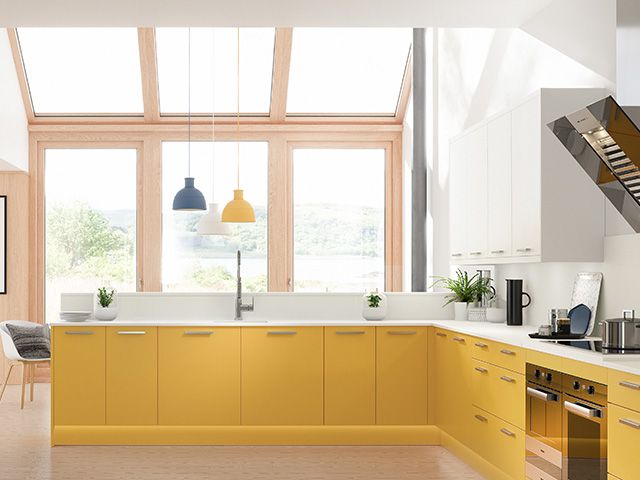
Go natural with textures and materials
Layering natural materials adds depth and authenticity to the 70s aesthetic, offering a sense of comfort that’s both nostalgic and timeless.
“Sustainability is at the heart of modern design, and the 70s were rich with organic influences, rattan, wood, cork and tactile fabrics like bouclé,” advises Kunal Trehan, interior designer and founder of Touched Interiors.
“These bring depth and authenticity to contemporary spaces.”
Rattan, velvet, boucle and wood are all great nods to the era.
“Combined in a thoughtful way, they add richness and depth while still feeling grown up,” Adel adds.
To avoid the look feeling too themed Kunal recommends keeping the palette neutral and pairing with sleek, modern finishes such as stone or brushed metal so it feels elevated, not nostalgic.
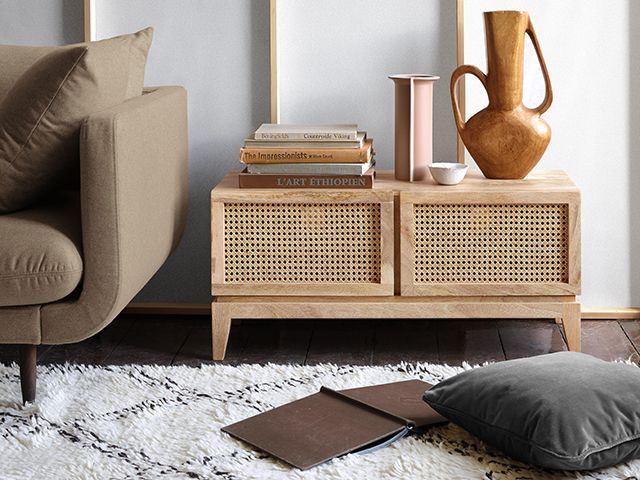
Checkered walls
Bold check prints – whether on upholstery, wallpaper or soft furnishings – bring a graphic punch to 70s-inspired spaces, nodding to the decade’s love of playful pattern and structured design
“Whether it be wallpaper or a bit of DIY painting, check print walls are making a huge comeback,” explains Ally.
“From children’s nurseries to bedrooms and bathrooms, the checkerboard trend is becoming more popular, with variations of the design in a range of colours.”
Ally says the check pattern comes not only the traditional black and white design, but variations in a range of bold and playful colourways.
“I’m loving the combination of pink and burgundy as a modern take on the trend, but for a more neutral look, pairing cream and white shades gives a subtle yet stylish look,” she adds.
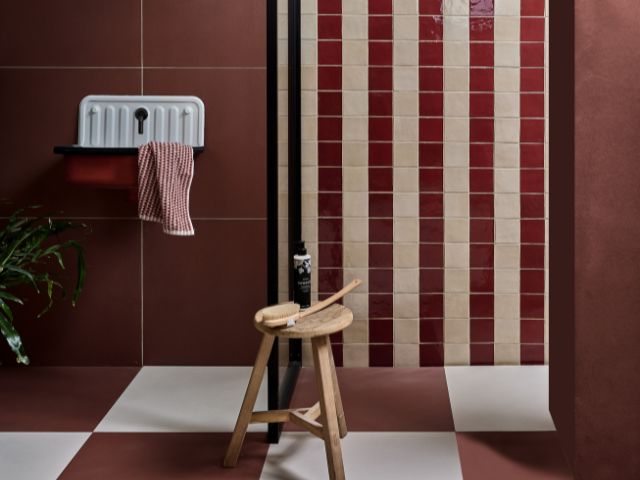
Bubble shapes and statement lighting
With their sculptural forms and retro finishes, 70s lighting designs are an easy way to bring a hit of vintage character to modern interiors
Kunal says we are moving away from discreet lighting to pieces that double as sculpture.
“The 70s were known for oversized pendants, smoked glass shades and playful geometry, all of which feel fresh again,” he says.
“Choose one hero piece as a focal point and keep surrounding fixtures pared-back,” he continues.
“This ensures the effect feels curated, not costume.”
Ally says bubble shapes were particularly popular in 70s interiors, with elements of the spherical design used throughout the home.
“As the trend makes a comeback, we are seeing a more timeless and minimal take, with smaller decorative elements in bubble form becoming popular.”
Incorporating bubble shapes through lighting is a great way to bring a modern yet timeless piece of the trend into the home.
“Opt for bubble chandeliers and wall lights to give a bold, retro look to your home.”
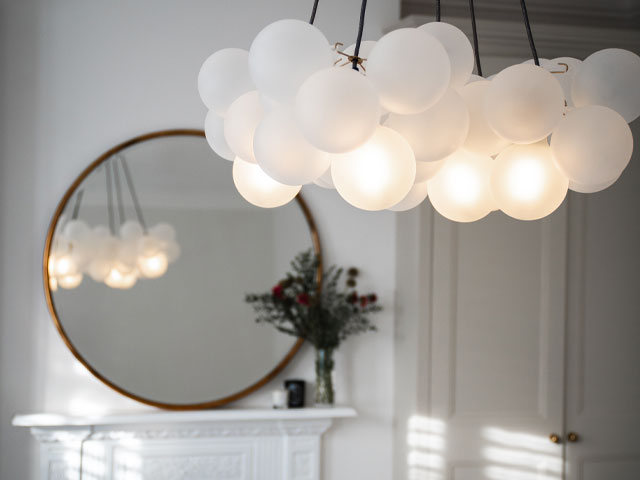
Play with bold, graphic prints
Nothing says 70s like a groovy graphic print – eye-catching, unapologetic, and full of personality, they bring the era’s free-spirited charm into the modern home.
“Pattern is returning with confidence, and the 70s offered striking geometrics and playful repeats that still feel contemporary,” Kunal says.
“They’re a great way to energise neutral spaces.”
To keep the look measured he recommends introducing prints through soft furnishings or a single wallpapered wall rather than committing to every surface.
“Balance with block colours to create breathing space,” Kunal adds.
Hannah Thistlethwaite, interior expert at Heals says 70s floral and geometric prints can quickly make a modern home look dated, so incorporating them has to be done with care.
“The trick is to go small,” she says.
“Adding in small pops of the popular prints is a subtle and tasteful way to nod to the 70s trend.
Things such as wall art are a great way to invite playful patterns into a space without being overwhelming.”
If you are feeling brave and want to go a little bolder, Hannah suggests adding a printed rug with a muted colour palette.
“Just keep this as the focal point of the room and avoid adding any more patterns that could make the space feel busy and chaotic.”
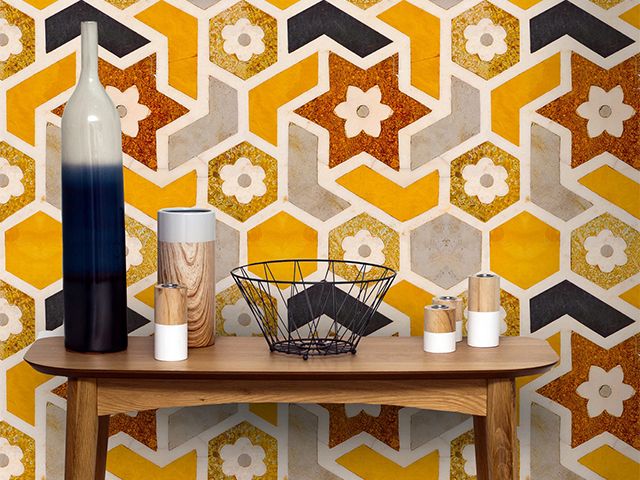
Layer vintage with modern
You don’t have to go full disco to get the 70s look.
Mix in a few vintage touches, like a retro lamp or graphic print, alongside modern furniture for a space that feels both nostalgic and now.
“Design today celebrates individuality, and mixing eras creates character,” advises Kunal.
“A 70s coffee table alongside a modern modular sofa, for example, feels eclectic and personal.
But it is important to keep proportions in mind.
“Vintage pieces should sit harmoniously with contemporary furniture rather than dominating the scheme,” Kunal adds.
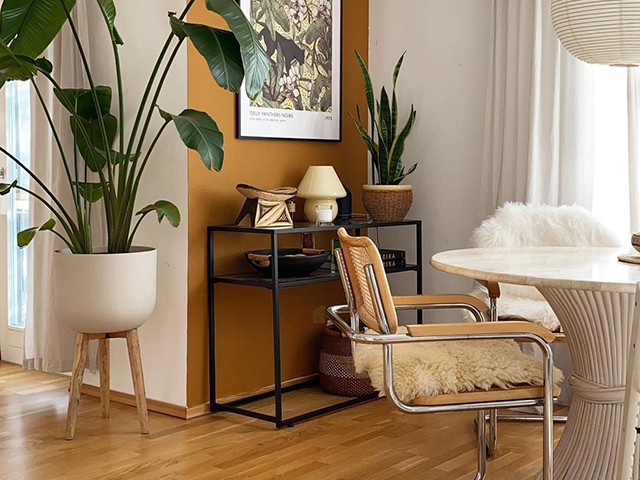
Experiment with a 70s colour palette
Rooted in earth tones and rich, sun-soaked hues, the 70s colour palette is all about warmth and depth – ochre, avocado green, burnt orange, and, of course, that unmistakable lemontini yellow.
“Earthy shades resonate with the current love of grounding, cocooning interiors,” says Kunal.
“They bring warmth and a sense of nostalgia without being overpowering.”
He suggests using these tones as accents against a calm base such as off-white or taupe, rather than saturating the room floor to ceiling.
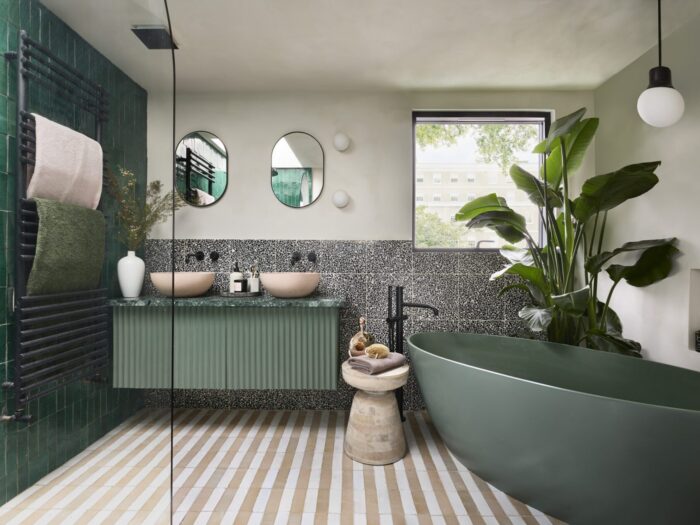
Add a touch of retro luxe
Want your 70s revival with a little extra shimmer?
Retro luxe details like smoked mirrors, chrome coffee tables and glossy sideboards dial up the drama while keeping things effortlessly cool.
“We’re seeing a move towards glamorous 70s touches, smoked mirrors, brass detailing and velvet upholstery, which bring sophistication to contemporary homes,” explains Kunal.
But it is important to use the touches sparingly as accents within a modern scheme so they hint at retro influences while keeping the overall look current.
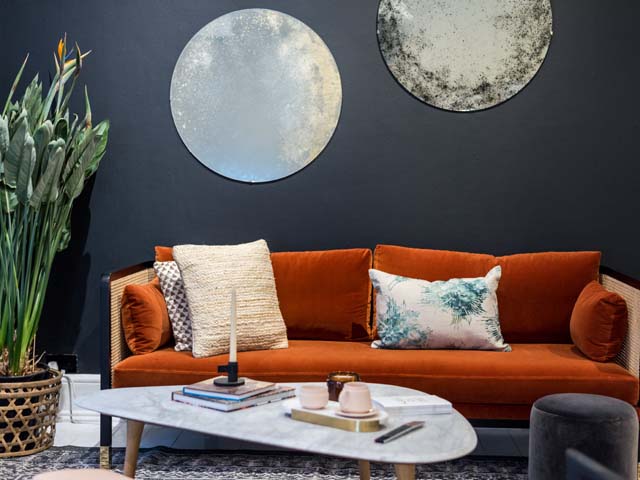
Introduce curved forms
Curved forms are central to 70s design, softening spaces with their sculptural silhouettes.
From arched doorways to tub chairs and rounded sofas, these shapes bring a sense of flow, comfort and retro sophistication
“Whether through a statement sofa, a rounded coffee table or a curvy accent chair, these shapes feel inviting and soften a space,” advises Adel.
“They bring in that 70s spirit but in a way that feels contemporary.”
Hannah agrees that introducing curvy silhouettes is a great way to nod to the trend.
“70s interiors rarely involved sharp edges and harsh lines, things were a lot softer, so this is something to be considered,” she explains.
“The trick is not to overwhelm your space, you don’t want to add retro shapes anywhere you can.
This can be overkill. Instead, choose one or two statement pieces to add retro flair in a more stylish and minimal way.
“‘Curved sofas’ has seen a +47% increase in searches over the last three months, and these are a great starting point for keeping the space soft – almost emulating the feel of a 70s conversation pit – whilst acting as a point of focus within your space,” Hannah adds.
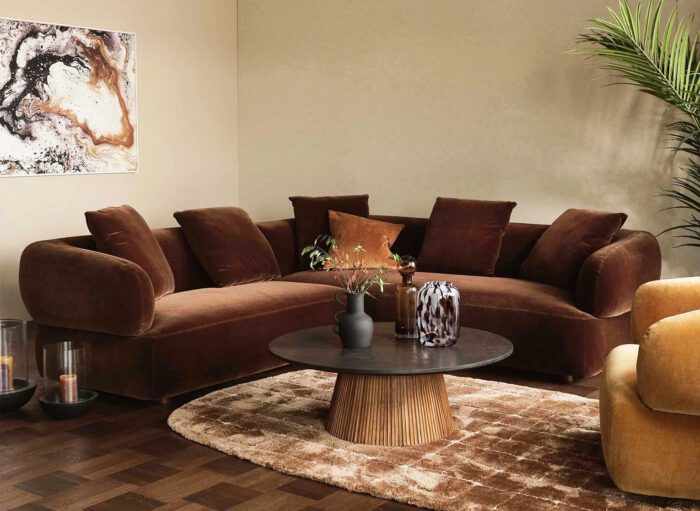
Layer your lighting
As well as opting for 70s style shapes, your lighting needs to feel layered to create the right ambience.
“70s interiors isn’t just a look, it is a feeling, and the best way to achieve that is lighting,” explains Hannah.
“Lighting can play a really important role when it comes to interiors, making or breaking the atmosphere.
“The 70s were low-lit and cosy, lighting was warm, making the space feel both homely and inviting. This is exactly what you want to replicate.”
Hannah says ‘Layered lighting’ has seen a huge +698% search increase in the last three months, alongside the 70s revival, and this is an easy way to tap into the cosy retro feel.
“You want to start by removing any harsh white bulbs and swapping them for warm yellow bulbs,” Hannah advises.
“Low-hanging lights or arched floor lamps with coloured glass shades will offer a warming glow to your space, creating that iconic 70s atmosphere, whilst tabletop mushroom lamps will provide authentic 70s style in a timeless way.”
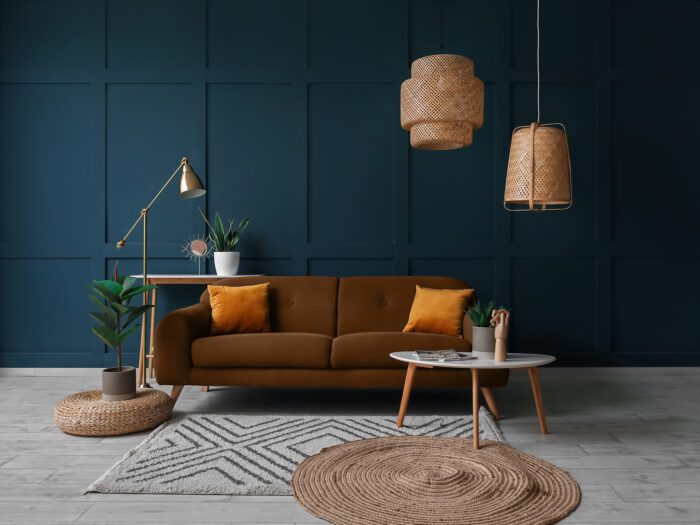
Looking for more interiors inspiration? Take a look at Obsessed with Wednesday? 13 Whimsy Goth ideas for your home or Fashionable fungi: How to get the mushroomcore look in your home.
READ MORE:




